The "Chocolat" switches from Kailh are an in-house development, even if one may still remember the flat cherry buttons with rather mixed feelings and some similarities are imposed. However, the problem of bending and blocking at that time, if you did not really actuate the flat buttons in the middle, no longer occurs with these new switches.
We tried to find these switches on the Kailh page, but only found them to a limited extent. What Kailh offers there as a PG1350C series has slightly different technical data, so that after comparing the details directly, we assume that Sharkoon uses individualized offshoots that are not offered directly by Kailh in this form.
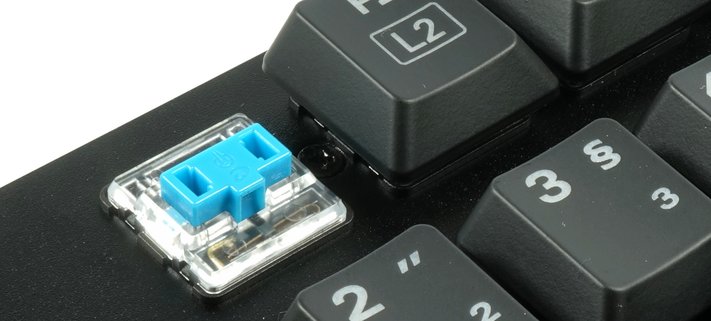
There are, of course, a lot of similarities, except for these slightly different characteristics. This includes the body made of transparent polycarbonate, the bottom shell made of non-fibrous polyamide and the optional internal assembly with variable LED. The phosphor bronze of the contact spring meets other metallic materials such as the brass plate with the nickel-plated contact surface and the stainless steel of the spiral spring of the probe.
The polyoxymethylene stamp is blue (or red) and thus marks the type of switch used, has very little play, glides well and looks solid. We will come to the design details and the inner structure in a while. With the keycaps made of ABS, we have a new, proprietary recording or the plug-in mechanism, so that the replacement with own, individualized caps must be (for the time being) probably.
As usual, the label is solved by lasercut. The font used is quite bold and therefore actually easy to read. However, some transitions optically smear when using more complex labels (see below). Here, continuous verses would have been smarter.
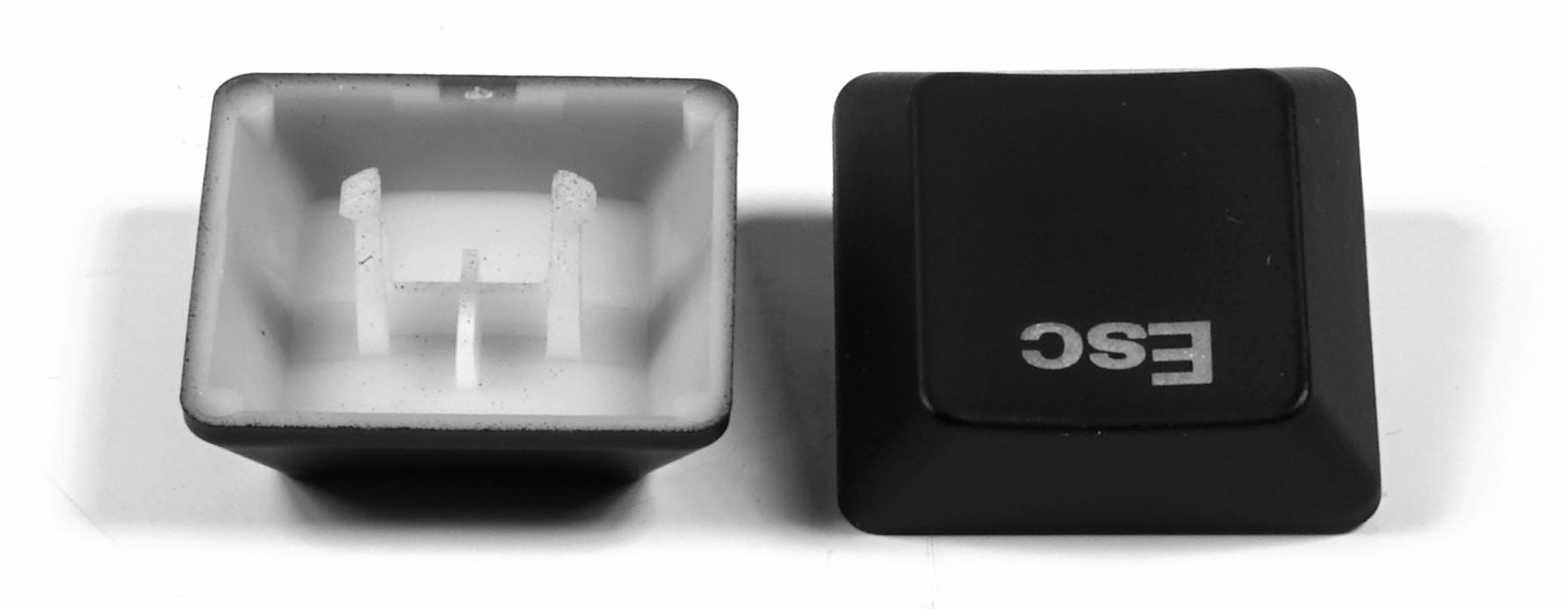
But let's get back to the interesting switches. Depending on the characteristic (see scheme left and right), the switches trigger at different force levels. If the blue buttons are still the usual 55 g, the red ones need only 45 g. The switching path is the same with 1.5 mm for both types.
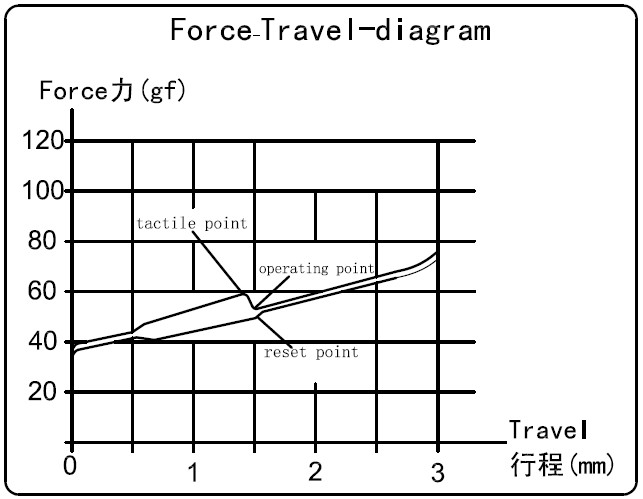 Blue Switch Blue Switch |
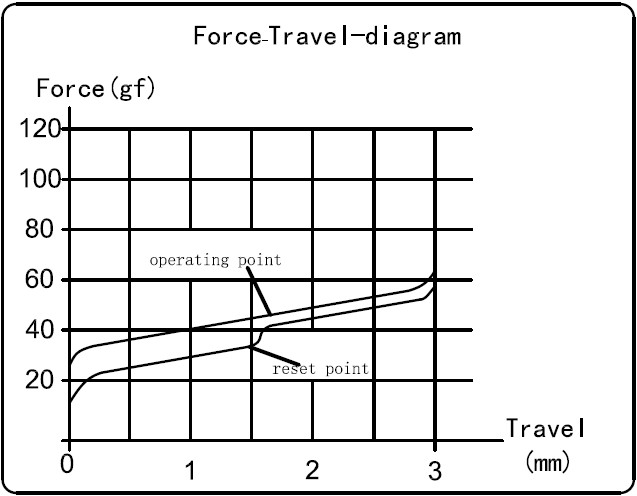 Red Switch Red Switch |
For the sake of completeness, we have of course also provided the respective detailed drawings for the very curious, which go even further into the subject matter:
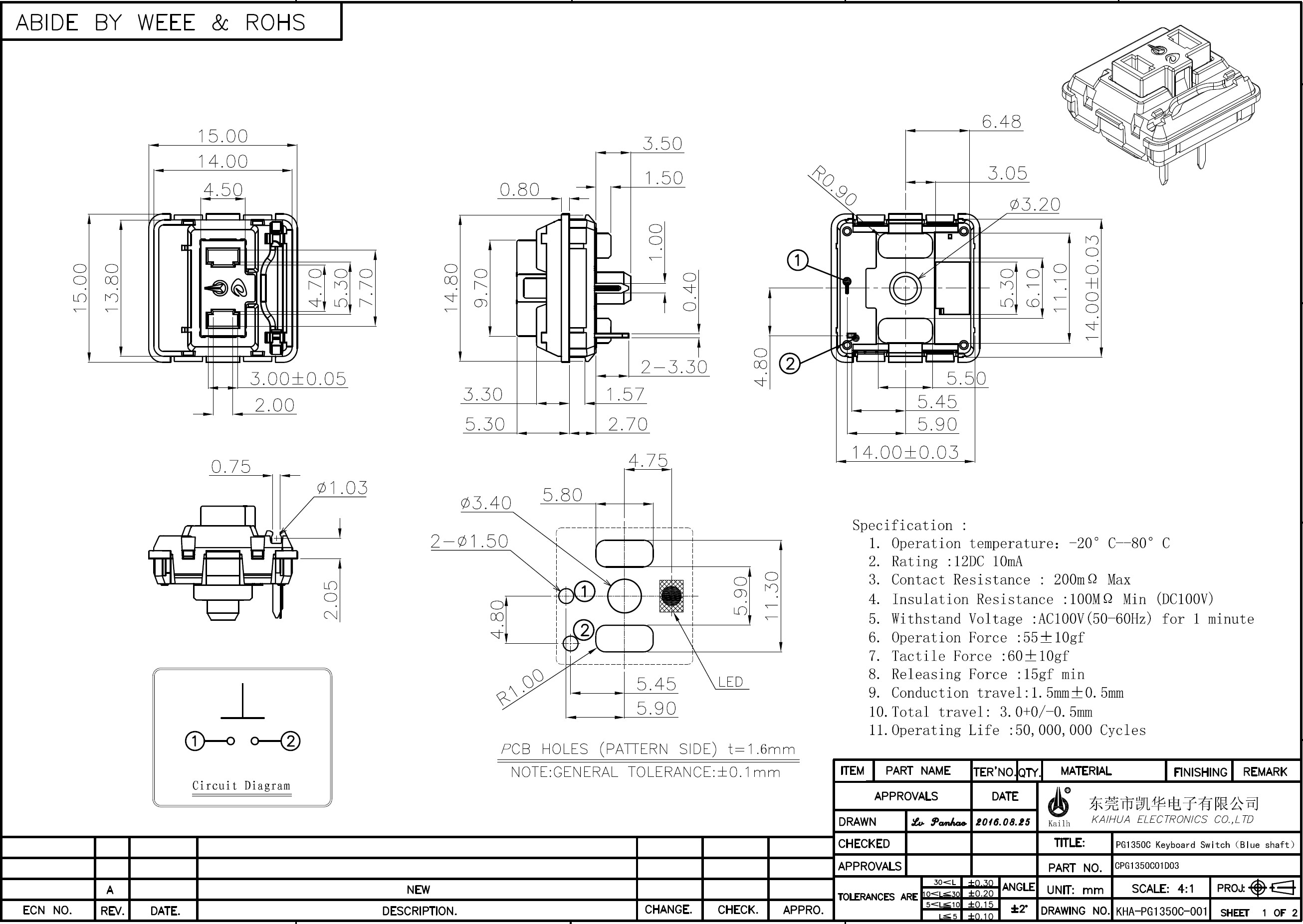 Blue Switch Blue Switch |
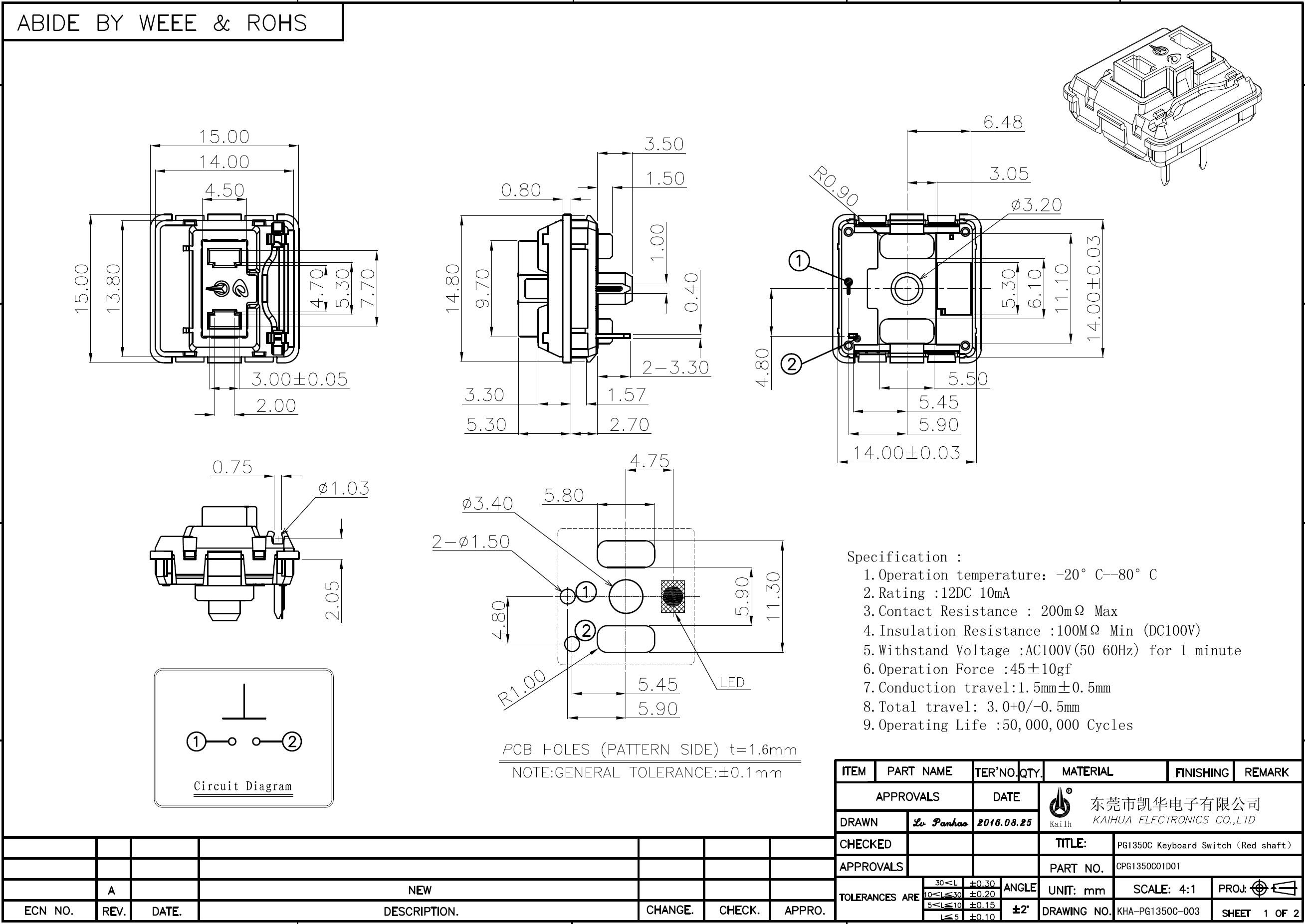 Red Switch Red Switch |
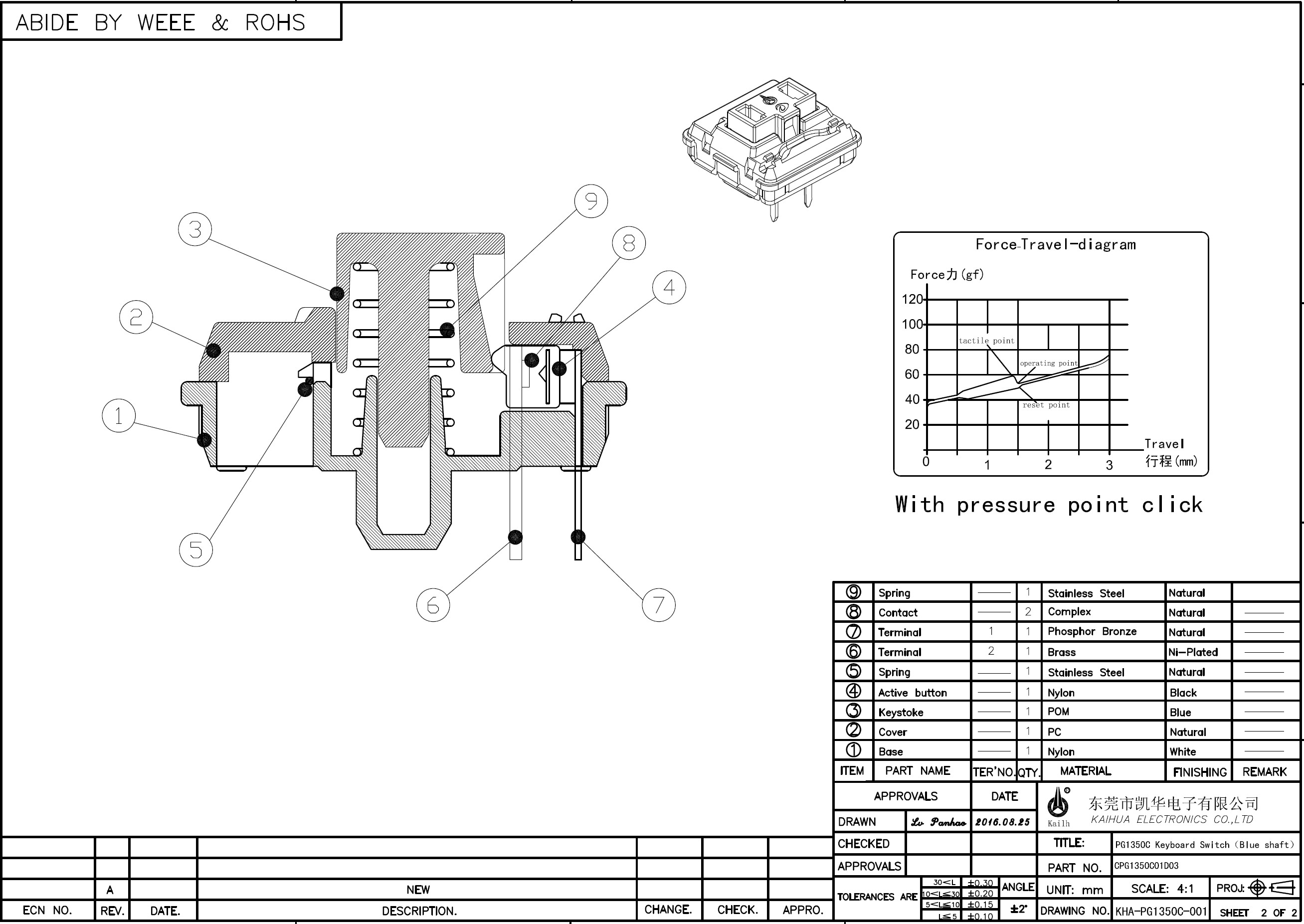 Blue Switch Blue Switch |
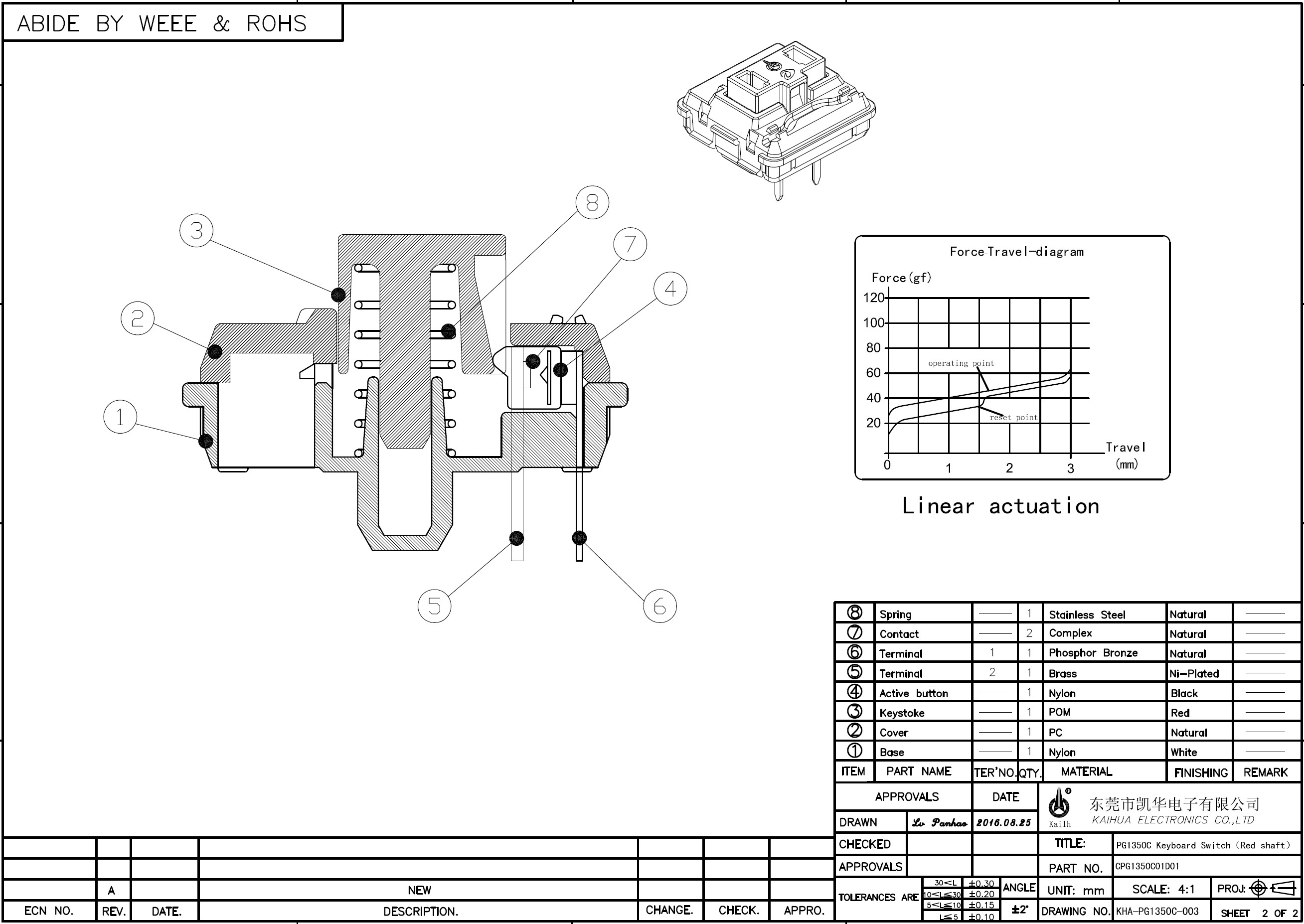 Red Switch Red Switch |
































Kommentieren